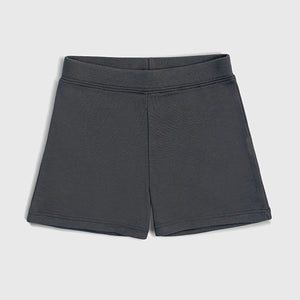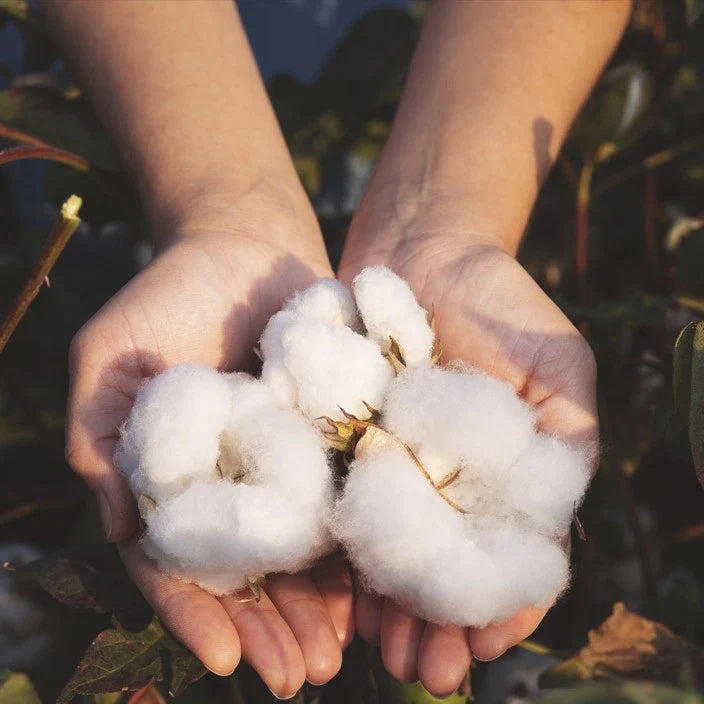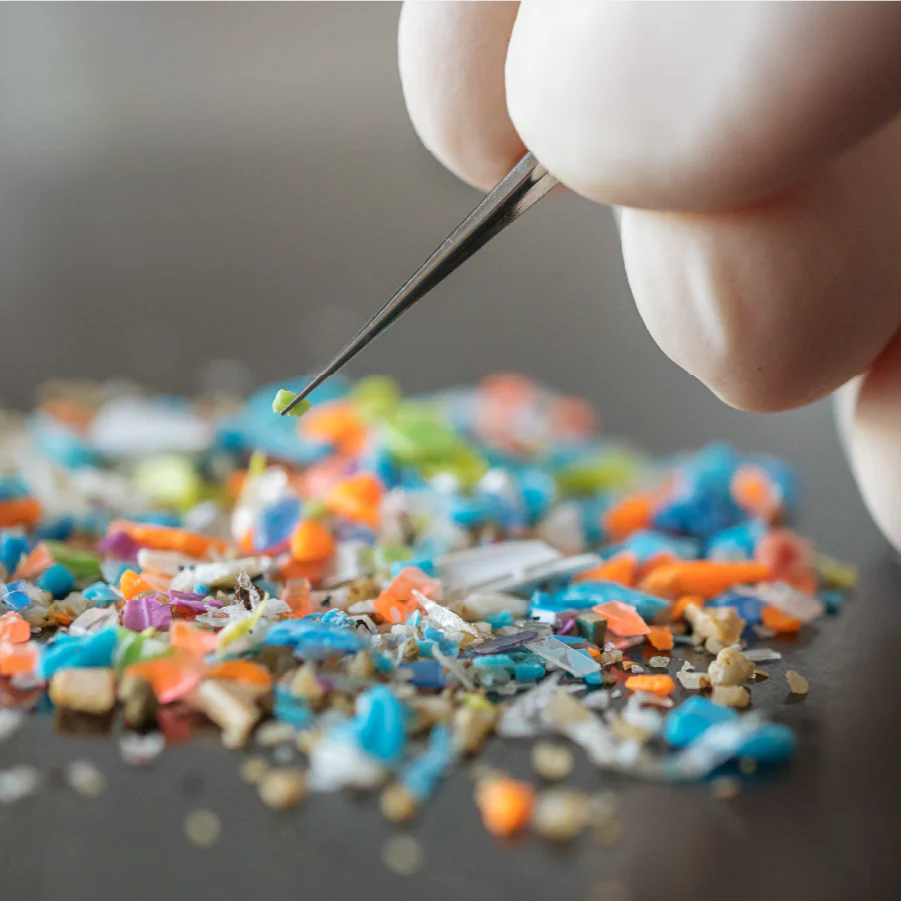Microplastics in Our Air and Homes:
The Hidden Crisis

Picture by Et Iluminare
AYA | OCTOBER 15, 2024
READING TIME: 5 minutes
Microplastics aren’t just a menace to our oceans—they’re sneaking into the very air we breathe in our own homes. While much of the focus has been on their impact in aquatic environments, groundbreaking studies reveal these tiny pollutants are now a daily part of our lives in ways we never imagined.
Let's dive into the surprising findings about how synthetic microfibers are impacting us on a more personal level based on studies by environmental scientists specialized in the study of microplastics.
What’s Floating Above Us?
Picture this: every breath you take could contain tiny pieces of plastic. In Paris, urban areas recorded an average of 110 microplastic particles/m2 each day [1], while suburban regions were not much better with 53 particles/m2 daily. Another similar study in central London found an average of 712 microplastic fibers/m2. [2]
What’s even more startling is that the majority of the analyzed fibers were natural like cotton and wool (50% in Paris, 69% in London), and petrochemicals were found in 29% in Paris and 17% in London, with synthetic fibers predominating. Yet, synthetic fibers endure over time compared to natural fibers, making up a significant chunk of the airborne debris.
These microplastics have numerous sources —think synthetic clothing, industrial processes, and the breakdown of larger plastic items. What’s troubling is their ability to travel vast distances, carried by wind before settling on the ground or infiltrating our homes.
Indoor Microplastics: The Invisible Intruder in Our Homes
If you thought outdoor air pollution was the only concern, think again. A follow-up study in Paris revealed that indoor air harbors much higher concentrations of microplastic fibers (0.4 - 59.4 fibers/m3) than outdoor air (0.3 - 1.5 fibers/m3). [3]
Indoors, 67% of these fibers were natural, while the rest were synthetic, with polypropylene being a major offender. This material isn’t just in our clothes but also carpets and furniture. As these fibers accumulate in indoor dust, there’s a real risk of ingestion, particularly for young children who are more prone to hand-to-mouth activities.
Health Implications: What We Know and What We Don’t
Here’s where things get murky. The health effects of inhaling microplastics are not fully understood. Larger fibers might not be a major concern for inhalation, but smaller particles, potentially down to the nanometer scale, could pose risks if they enter our body. There's also the worry that these fibers could release harmful chemicals within our respiratory systems, though research is still in its early stages.

Illustration showing how airborne microplastics, such as polypropylene, polystyrene, and polyamide fibers, can be inhaled and become lodged in the lungs. Image from Amato-Lourenço et al. 2021.
A related study found that inhaled plastic (e.g. polyester) and cellulosic (e.g. cotton) fibers were present in 87% of the human lung specimens analyzed. [4] These resistant fibers, including polyester, were detected in both non-cancerous and cancerous lung tissues. A similar study detected synthetic polymers like polypropylene and polyethylene in 65% of lung samples [5], with fibers as small as 8 µm. Both studies highlight the potential risk that everyday exposure to microplastics poses to our respiratory health. They suggest that these fibers, once inhaled, can evade the body’s natural defense mechanisms and remain lodged in the lungs indefinitely, contributing to inflammation and possibly lung disease.
In a more recent discovery, microplastics were also found in the human brain, specifically in the olfactory bulb [6], which is responsible for our sense of smell. This finding raises new concerns about how microplastics can bypass the blood-brain barrier and potentially cause neurotoxic effects. The presence of polypropylene fibers (43.8%) suggests that these airborne particles can travel through our nasal passages, highlighting the urgent need for more research on the long-term effects of microplastic exposure on the nervous system.
Several studies have been reviewed on the potential impacts of the presence of micro and nanoplastics in various organs. [7] Scientists believe that these particles can harm our health by causing problems like inflammation, stress in our cells, and a weaker immune system. These particles might also mess with how our organs work, slow down cell growth, and could even increase the risk of diseases like cancer. While most of this information comes from animal studies, more research is needed to fully understand the risks for humans, especially over a long time.
Glossarykeywords
Microfiber:
Extremely thin fibers that shed from fabrics, typically less than 5 mm in size. They can be either synthetic (like polyester) or natural (such as alpaca wool).
Microplastics:
Tiny plastic particles, smaller than 5mm, found in the environment from the breakdown of larger plastics or industrial processes.
Nanometer:
A very small unit of measurement equal to one-billionth of a meter.
Neurotoxicity:
Damage to the nervous system caused by toxic substances.
Synthetic:
Man-made material or substance, like plastic, created artificially rather than occurring naturally.
Synthetic Polymers:
Man-made materials made by linking many small molecules, like plastics, that don’t break down easily in the environment.
Petrochemicals:
Chemicals derived from petroleum. Many plastics and synthetic fibers are made using petrochemicals.
Polypropylene:
A type of plastic commonly used in packaging. It’s one of the main components of microplastics.

Fibers inhaled and found in lung samples from different patients. Image from Pauly et al. 1998.
What Can We Do?
Awareness is the first step. By understanding the sources and potential risks of microplastics in our air and homes, we can take action to reduce exposure. Simple measures like regular cleaning to minimize dust accumulation, choosing natural fibers over synthetics, and supporting policies that address plastic pollution can make a difference.
Stay informed, stay proactive, and let’s tackle this hidden crisis before it becomes a larger threat to our health and environment.
Glossarykeywords
Microfiber:
Extremely thin fibers that shed from fabrics, typically less than 5 mm in size. They can be either synthetic (like polyester) or natural (such as alpaca wool).
Microplastics:
Tiny plastic particles, smaller than 5mm, found in the environment from the breakdown of larger plastics or industrial processes.
Nanometer:
A very small unit of measurement equal to one-billionth of a meter.
Neurotoxicity:
Damage to the nervous system caused by toxic substances.
Synthetic:
Man-made material or substance, like plastic, created artificially rather than occurring naturally.
Synthetic Polymers:
Man-made materials made by linking many small molecules, like plastics, that don’t break down easily in the environment.
Petrochemicals:
Chemicals derived from petroleum. Many plastics and synthetic fibers are made using petrochemicals.
Polypropylene:
A type of plastic commonly used in packaging. It’s one of the main components of microplastics.
References:
[1] Dris, R., Gasperi, J., Saad, M., Mirande, C., & Tassin, B. (2016). Synthetic fibers in atmospheric fallout: a source of microplastics in the environment?. Marine pollution bulletin, 104(1-2), 290-293. https://doi.org/10.1016/j.marpolbul.2016.01.006
[2] Wright, S. L., Ulke, J., Font, A., Chan, K. L. A., & Kelly, F. J. (2020). Atmospheric microplastic deposition in an urban environment and an evaluation of transport. Environment international, 136, 105411. https://doi.org/10.1016/j.envint.2019.105411
[3] Dris, R., Gasperi, J., Mirande, C., Mandin, C., Guerrouache, M., Langlois, V., & Tassin, B. (2017). A first overview of textile fibers, including microplastics, in indoor and outdoor environments. Environmental pollution, 221, 453-458. https://doi.org/10.1016/j.envpol.2016.12.013
[4] Pauly, J., Stegmeier, S., Allaart, H., Cheney, R., Zhang, P., Mayer, A., & Streck, R. (1998). Inhaled cellulosic and plastic fibers found in human lung tissue. Cancer epidemiology, biomarkers & prevention: a publication of the American Association for Cancer Research, cosponsored by the American Society of Preventive Oncology, 7(5), 419-428.
[5] Amato-Lourenço, L. F., Carvalho-Oliveira, R., Júnior, G. R., dos Santos Galvão, L., Ando, R. A., & Mauad, T. (2021). Presence of airborne microplastics in human lung tissue. Journal of hazardous materials, 416, 126124.
[6] Amato-Lourenço, L., Dantas, K., Júnior, G., Paes, V., Ando, R., de Oliveira, R., ... & Mauad, T. (2024). Microplastics in the Olfactory Bulb of the Human Brain. JAMA Network Open, 7(9), e2440018-e2440018. doi:10.1001/jamanetworkopen.2024.40018
[7] Ali, N., Katsouli, J., Marczylo, E. L., Gant, T. W., Wright, S., & de la Serna, J. B. (2024). The potential impacts of micro-and-nano plastics on various organ systems in humans. EBioMedicine, 99. https://doi.org/10.1016/j.ebiom.2023.104901
You don't have to put all the weight on your shoulders. Every action counts. At AYA, we fight microplastic pollution by making a 100% plastic-free catalog.
Visit Our Shop →You May Also Like to Read...
Paris Fashion Week 2025: Can Sustainable Fashion Replace Glamour?
Explore the environmental impact of Paris Fashion Week 2025, from carbon footprints to textile waste. Are luxury brands balancing glamour with eco-friendly practices?
Sustainable Fashion Insights for World Environment Day
Discover how sustainable fashion—using organic cotton, natural dyes, and local production—is shaping a regenerative future for World Environment Day.
The Health Risks of Synthetic Fibers & Microplastics
Explore the health impacts of synthetic fibers—respiratory damage, gut disruption, and hormonal imbalance—and how to switch to safe, natural alternatives.
Fast Fashion and Biodiversity Loss
Fast fashion is accelerating ecosystem destruction, from deforestation to ocean pollution. Discover how this industry is contributing to global biodiversity loss.




















